Popular luxury crossover gets a new tailor but has the same appeal
What is it?
It’s an overhaul for the original ultimate automotive appliance, luxury brand edition.
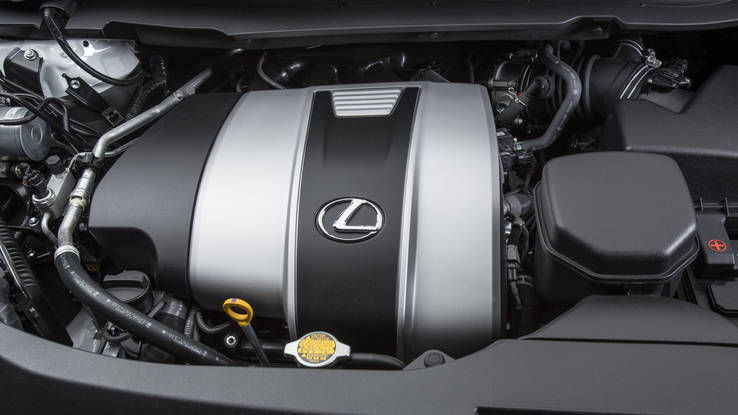
2016 Lexus RX 350
Success brings challenges, to be sure. With the ’16 RX, engineers and product planners were left with the tricky task of keeping loyalists happy while trying to broaden appeal—most obviously beyond the aging baby boomers who took to the RX in the first place. The key to Lexus’s play for younger, more adventurous buyers is a bit more aggression, and it starts with the RX’s styling. This crossover has grown consistently less stodgy looking with each evolution, but the ’16 RX represents the biggest departure yet.
The new RX presents Lexus’s now familiar “spindle grille” as boldly as any vehicle to date. Its front roof pillars have been pushed rearward to emphasize the length of its hood. The plane of its roof is flattened and it floats above the RX’s hips and hatch, courtesy of the black-out treatment at the bottom of the rear pillars. LED headlights come standard, with shimmering-jewel LED marking lights.
This RX grows compared to its predecessor. Its 109.8-inch wheelbase increases nearly two inches and its length nearly five inches. Measuring 192.5 inches bumper to bumper, the RX is now longer than Mercedes’ mid-size GLE SUV. Its unibody has been modernized with more hot-pressed, high-strength steel, laser screw welding and linear yards of polymer adhesive. The hood and hatch are aluminum and there are lots of NVH improvements, starting with thicker acoustic glass.
Larger exterior dimensions make more interior space—at least for people, primarily in hip and legroom. Thanks probably to the more rakish roof line, maximum cargo volume drops, to 56.3 cubic feet.
And despite savings in the new unibody, the ’16 RX’s curb weight increases 44 pounds.
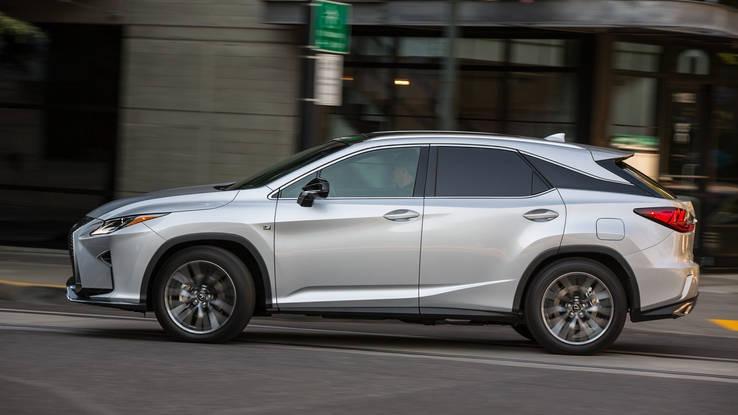
2016 Lexus RX 350 F Sport
Its familiar 3.5-liter V6 is updated with direct fuel injection, though it follows Toyota’s curious practice of using both direct and port injection. The heads are redesigned for the purpose, with new ports and a re-profiled combustion chamber that increases compression ratio about 10 percent (to 11.8:1). The cylinder bores are finished with a new resin coating, and there are other friction reductions throughout.
Bottom line, the ’16 RX 350 V6 makes 295 horsepower and 267 pound-feet of torque, or 25 hp and 15 lb-ft more than 2015. Lexus projects EPA ratings of 19 mpg city and 26 highway with AWD—up 5 and 8 percent respectively, despite the extra power and curb weight. The gain is largely a function of engine efficiencies and a new transmission.
The transmission is an eight-speed automatic across the board, replacing the six-speed previously used in the standard RX 350. There’s also a new clutch-operated rear differential for RXs with AWD, complete with a lock feature that holds front/rear torque distribution at 50/50.
The RX 450 hybrid uses the same 3.5-liter V6, managed with the variable valve timing for steady Atkinson Cycle operation. Output drops to 259 hp, 247 lb-ft. Two motors—one parallel, one in series—raise maximum peak horsepower to 309. The hybrid has a continuously variable automatic, and all-wheel-drive variants add a third, 67-hp motor that is the exclusive power source for the rear wheels.
As other manufacturers switch to lithium, Lexus is sticking with its tried and true nickel metal hydride batteries. This probably comes down to investment and packaging. The RX batteries sit low, between the frame rails, and reduce cargo volume by just .4 cubic feet. The hybrid’s curb weight increases 353 pounds.
The suspension continues with struts in front, separate coil springs and shocks in back, but it’s been substantially retuned. There’s a thicker anti-roll bar in front, firmer bushings and reinforced attachment points—all calibrated to reduce body roll and enhance the feeling of transitional response, even in the standard RX. There’s also a more rigid steering shaft, a new brake actuator intended to shorten pedal stroke and the RX’s first electric parking brake, with switchable hill-hold function. Factory wheels range from 18 to 20 inches.
The key functional feature in the RX F-Sport package (now available on the hybrid) is Adaptive Variable Suspension with magnetorheological shocks. Ride height drops from 8.2 to 7.5 inches. F-Sport adds paddle shifters for the eight-speed, more heavily bolstered sport seats and a broader range of control choices for throttle management, stability control etc.—including a Custom feature that allows each to be adjusted separately. Finally, the package adds a range of appearance items inside and out, including a mesh grille and aluminum pedals and scuff plates.

2016 Lexus RX 450h
The 2016 Lexus RX will emerge from its Cambridge, Ontario, assembly plant by November. Lexus promises a “value play,” with base prices below $ 45,000–still about $ 5,000 more than the ’15 RX. There will be four wood trim options, including a dark Sapele with aluminum pin-striping, three grades of leather and a 12.5-inch video display. The Mark Levinson audio upgrade remains one of autodom’s best, with 835 watts through 10 channels and 15-minutes of cached broadcast playback.
By the start of its second generation in 2003, RX sales had surpassed 100,000 a year, with a 30 percent share of its market among five competitors. In the last year of its third gen, sales are on pace for 100,000, though the number of competitors has increased to 16 by Lexus’s count.
With new crossover competitors appearing a couple of times a year, the fourth-gen RX should be considered a success if can maintain its longstanding sales leadership, regardless of who buys it.
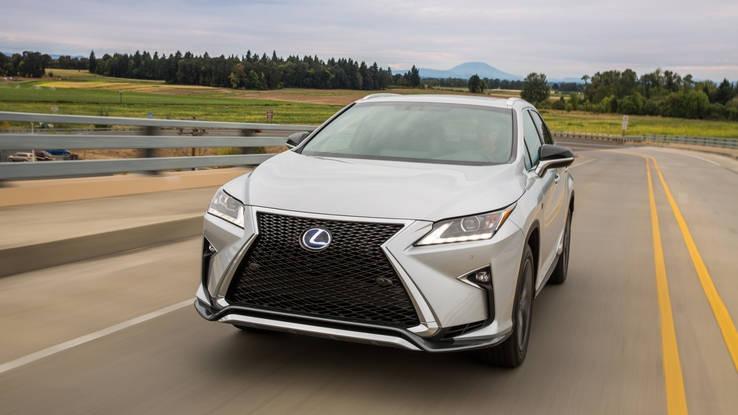
2016 Lexus RX 450h F Sport
How’s it drive?
Smooth, solid and quiet. If it isn’t exactly fast, the 2016 RX is lively enough to occasionally encourage its driver to push. The eight-speed automatic is suave and well managed, and it will keep the V6 humming near its torque peak on demand.
The RX 450h is not appreciably quicker than the RX 350, despite the nominal increase in peak horsepower. It isn’t appreciably slower either, but it drones more thanks to the CVT, and it feels heavier almost immediately. Saw at the wheel a few times and you can feel the extra weight want to keep going against the direction of the steering. The hybrid understeers more readily, even with AWD. If the in-dash power distribution display can be trusted, the RX 450h seems as willing to electrically power up its back wheels, but it doesn’t achieve the same levels of rear torque as the RX 350.
The new RX makes a nice place to hang out with family or a couple of friends. The dashboard seems a hint busy at first blush, but that might be the price of lots of hard switches that work directly on the things you want to adjust, no menus required. We’ll take the switches. Beyond that, it’s mostly serene. The layout is effective and the graphics are crisp and legible throughout. The finish is first rate and the seats are firmly comfortable. The F-Sport seats, with thicker bolsters on the seat back, make it a bit more challenging to manipulate the joystick interface and other controls on the console.
It’s roomier in back, compared to the typical compact crossover, and generally more spacious feeling than its predecessor. The power rear seat backs fold forward and flat with switches on the dash, the rear seat bottoms and just inside the hatch. A power lift gate comes standard, with memory that allows users to set its stop position as tastes or garage space demand, and it opens to expose more cargo space than you’ll find in any sedan’s trunk. The hands-free option works by waving an appendage over the Lexus logo on the back.
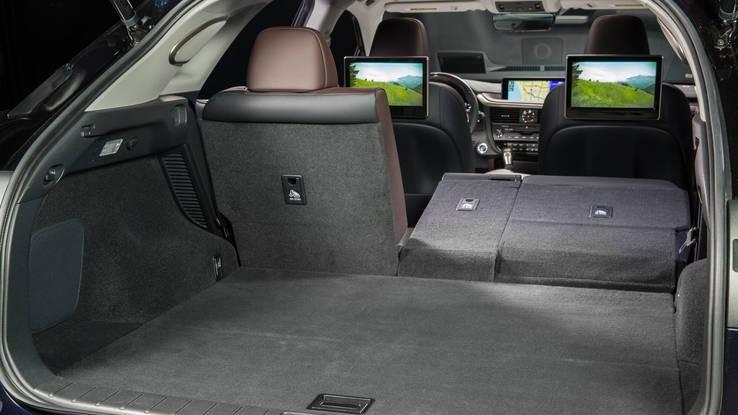
2016 Lexus RX 450h
Dynamically, the RX goes something like a smoother, quieter Toyota Camry with slightly higher mass—or better, a Lexus ES 350 sedan. The marketing department might not like the concept, but in practical terms the RX 350 is an ES station wagon, and that’s not a bad thing. Even without F-Sport, it can be engaging in a pleasant if not necessarily thrilling fashion.
F-Sport is a bit livelier. There’s a little less body roll without a stiff ride, though the ultimate boundaries of grip or speed do not increase substantially. The F-sport still understeers as it approaches the limit of tire adhesion. There doesn’t seem to be any difference in the quantity of torque the F-Sport shifts to its rear wheels, or the rate at which the shift occurs. There’s no torque vectoring in its differentials.
Is F-Sport worth the price? Depends on whether the ’15 premium of about $ 8,000 holds for 2016. Purely for the performance gain—and not accounting for appearance adjustments, sport seats or paddle shifts that are part of the package—it might not be.
Block out whatever visual excitement the styling creates, and the ’16 RX is basically what it’s always been: exciting mostly for its steady, annoyance-free behavior, or for the possibilities its multi-role capability suggests.
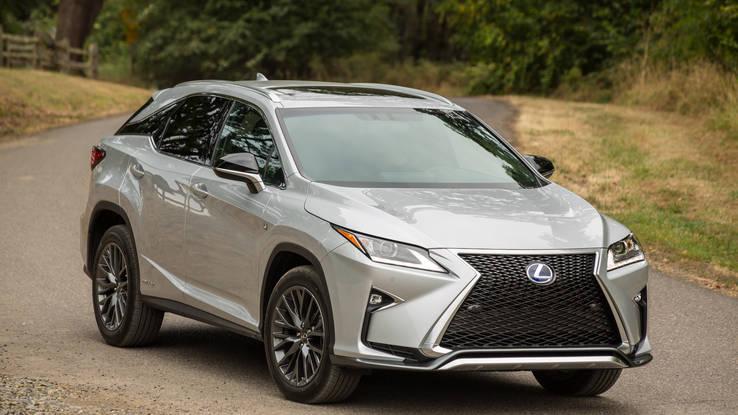
2016 Lexus RX 450h F Sport
Do I want it?
Even if you don’t want it, we’d bet the farm that a lot of people will. The new Lexus RX does its job well. It successfully strikes a balance between keeping the faithful happy and potentially generating interest among a new group of buyers drawn by is flashier duds.



























